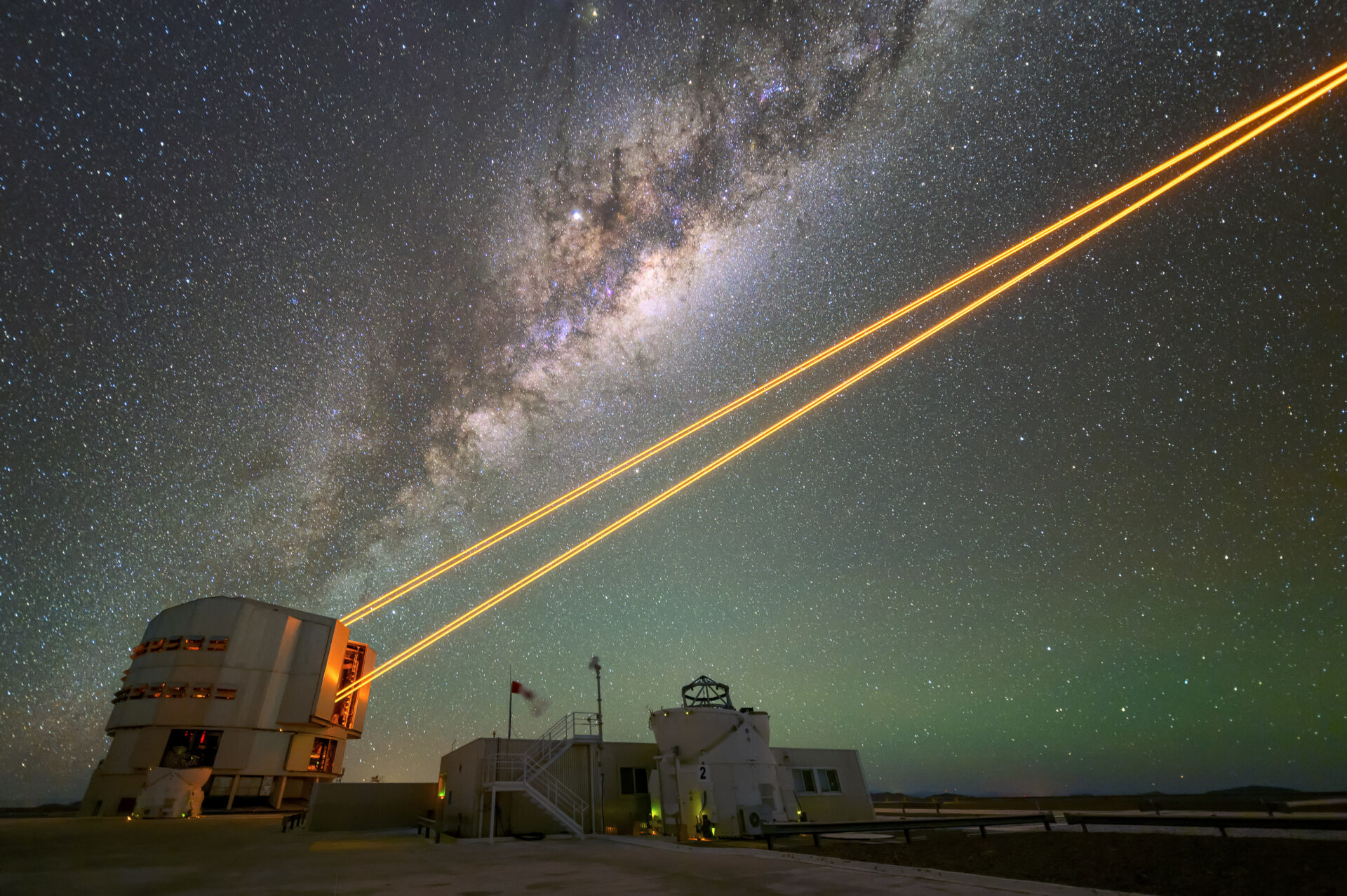The presented image was published on the website of the European Southern Observatory (ESO). It demonstrates powerful laser beams coming into the sky from the tower of the fourth “unit” of the Very Large Telescope (VLT).

VLT is located on top of a mountain in the Chilean Atacama Desert. This is one of the best places on Earth for astronomical observations in terms of climatic conditions and distance from sources of light pollution. But even here, atmospheric turbulence creates significant problems for researchers trying to look into the depths of space.
To eliminate the influence of the earth’s atmosphere, astronomers use adaptive optics technology. For this purpose, the telescopes use deformable mirrors that change the profile of their optical surface with a frequency of up to 1000 times per second based on data on atmospheric turbulence.
In turn, to determine the magnitude of atmospheric turbulence, astronomers create artificial stars using lasers operating at a wavelength of 589 nm (it has a specific yellow-orange hue). This radiation excites sodium atoms at an altitude of about 90 km above the Earth, causing them to glow. As a result, an artificial star appears in the sky. Comparing the theoretical and real parameters of such a star, the computer calculates the characteristics of atmospheric turbulence and then compensates for them by changing the shape of the telescope mirror.
In the sky, which the laser beams are aimed at, the belt of the Milky Way is visible stretching across the entire firmament. The image also shows a faint greenish tinge of the sky. This is a phenomenon known as the glow of the night sky. It occurs due to the natural radiation of atoms and molecules of the earth’s atmosphere. It can only be seen where the sky is dark enough and not subject to light pollution.
Earlier we wrote about how VLT photographed a nearby spiral galaxy.
According to https://www.eso.org
Follow us on Twitter to get the most interesting space news in time
https://twitter.com/ust_magazine

